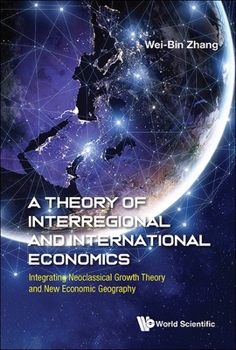Theory of Interregional and International Economics, A: Integrating Neoclassical Growth Theory and New Economic Geography
The contemporary global economy is characterized by complex and nonlinear dynamics of interregional and international economic interactions. The complexity is associated with endogenous changes in wealth, human capital, technology, population, economic structures and gender relations. It is obviously necessary to construct a theory to connect all these changes in a single analytical framework with minimum assumptions. Nevertheless mainstream economic theory on spatial economics is mostly static and partial. This book expands on spatial economics by integrating various theories of spatial economics into a comprehensive and analytical framework through mathematical modelling and computing.This book is part of the author's general economic theory with endogenous population, capital, knowledge, preferences, sexual division of labor and consumption, institutions, economic structures, and exchange values over time and space. It focuses on further developing the theory of interregional and international economies and encompasses dynamic relations between population growth, human capital and wealth accumulation, environmental change, gender, institutions, market structures, the division of labor and consumption, and the determination of price structure among regions and nations in a single analytical framework.
Format:Hardcover
Language:English
ISBN:9811294852
ISBN13:9789811294853
Release Date:December 2024
Publisher:World Scientific Publishing Company
Length:404 Pages
Weight:1.55 lbs.
Dimensions:0.9" x 6.0" x 9.0"
Customer Reviews
0 rating





